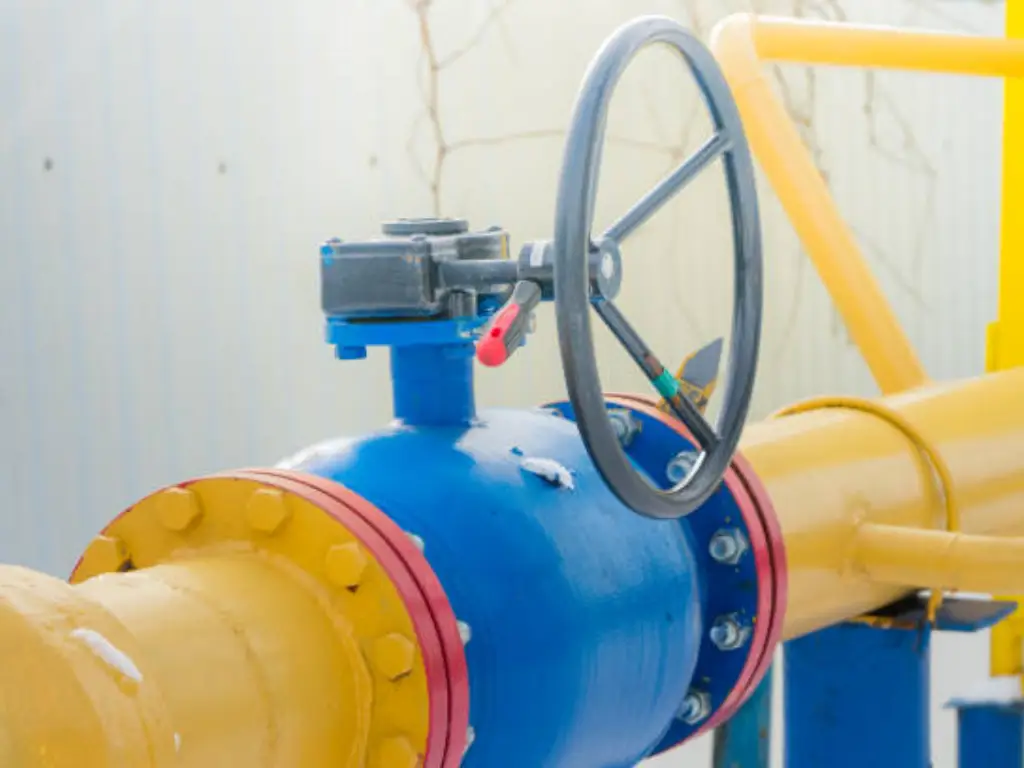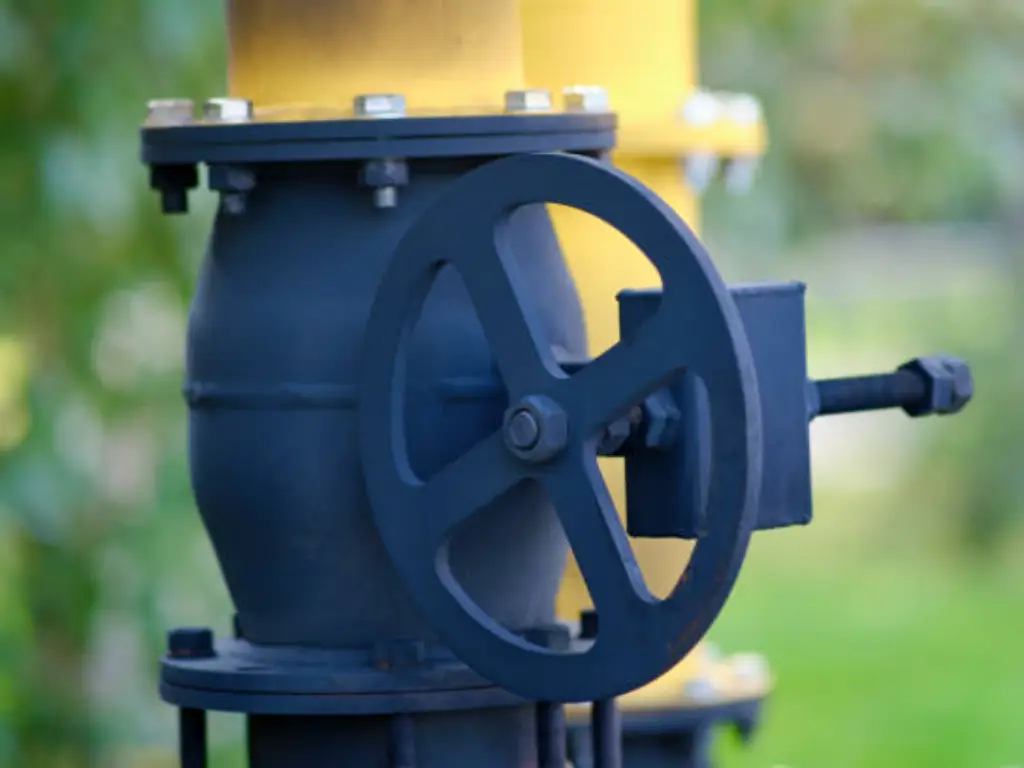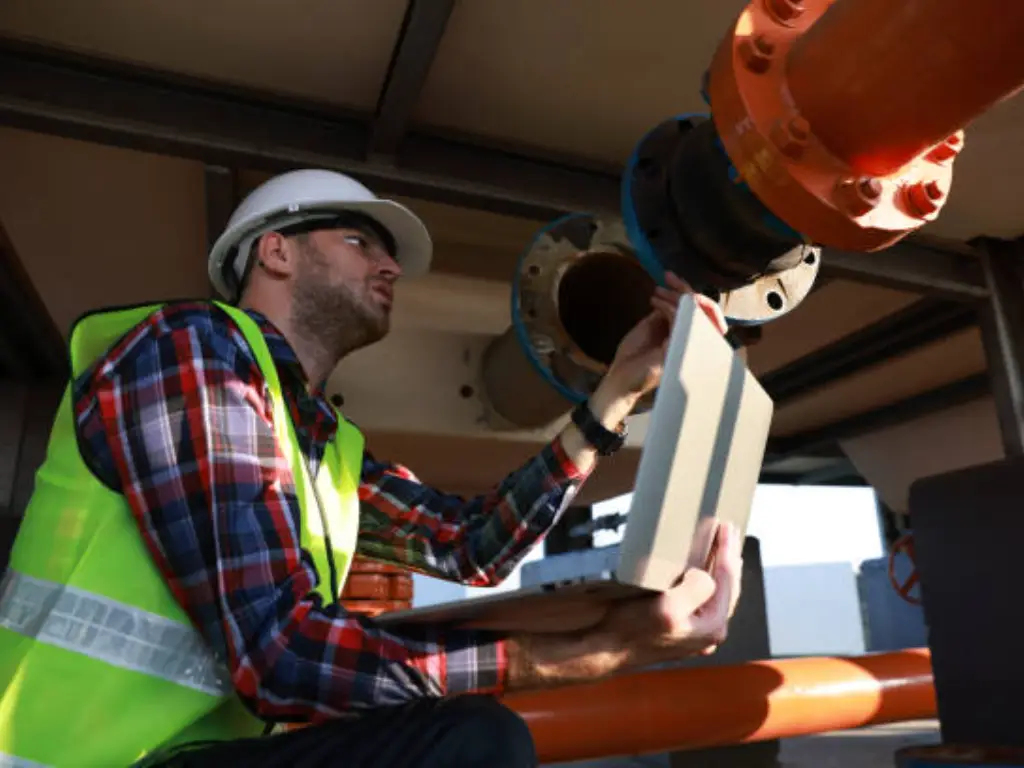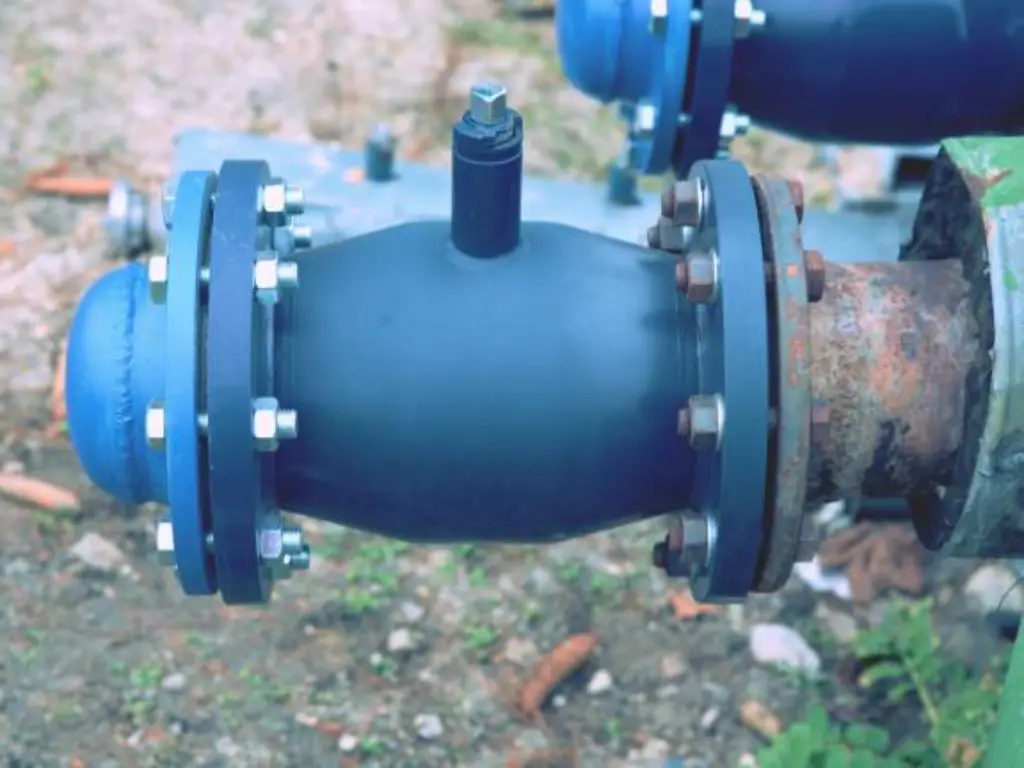Introduction
When it comes to the operation of piping systems, one must choose a suitable check valve. For non-slam check valves, they are specially designed to prevent water hammer which is a common problem leading to extensive destruction. This type is engineered for controlled valve closure that limits reverse flow and pressure surges. In this write-up, we will discuss different types of non slam check valves, their key features and their benefits in relation to particular applications in different sectors, helping you make the right choices that would ensure utmost performance of the system.
How Does Non Slam Check Valve Work?

Non slam check valves are used in a piping system to regulate the back flow of fluids. Unlike other types of slam check valves, they close gently, thus reducing the occurrence of water hammer. When the fluid flows forward, the valve disc opens and there is passage. When the flow is reversed, the spring assist mechanism assists the disc to close rapidly and quietly and not suddenly. This controlled operation is done by designs such as the nozzle check valve and tilting disc check valves that provide a steady flow and a fast response without creating pressure fluctuations and thus preserving the system’s stability and performance.
Types of Non Slam Check Valves: An Overview

It is important to select the correct non slam check valve for maximum productivity and safety in many industrial applications. Here below we explore the typical types of non slam check valves, discussing their design characteristics, materials, advantages and giving examples of suitable applications.
Axial Flow Check Valves
Axial flow check valves have been designed to guarantee smooth flow path, which would minimize turbulence and energy loss. They are made of strong materials such as stainless steel to withstand harsh conditions like high pressures. With the axial check design, they are capable of rapid closure response that reduces chances for backflow and keeps the system whole. For clean fluid applications such as potable water and process fluids, these valves work equally well in different body configurations and service conditions. Their full bore capability makes them preferred choice for high velocity pipelines.
Swing Check Valves
Swing check valves have a hinged disc that swings open allowing for flow and closes when there is no more flow to avoid backflow. These valves are famous for their simple valve design that can easily be maintained. Swing check valves are often used where water and wastewater pumps operate under low or moderate pressure conditions. Depending on the material used, they can handle temperatures ranging from -20°C to 180°C . Residences as well as industries go for swing check valves due to their multi-use abilities.
Dual Plate Check Valves
This type of valve contains two metal plates with springs which are opened or closed by liquid flow. This design makes it perfect for places with limited space and needing light weight solutions, including flow reversal back pressure that can be minimized. Carbon steel, stainless steel and other materials used in making these valves ensure they adapt to different service conditions. Owing to their compact size and low mass, dual plate check valves are commonly applied in situations where space and weight are important such as offshore and marine environments. Water hammer is avoided by their quick closure capability.
Non Slam Venturi Check Valves
Venturi check valves that are non slam type are designed with a body that is in the shape of venturi so as to control flow and minimize pressure loss. The valves allow for gradual and smooth closing which prevents water hammering thus guaranteeing a stable closed position. They are generally made of high-strength alloys and therefore can withstand high pressures typical in systems such as boilers, steam systems etc. The boost provided by venturic design enhances flow efficiency, making it suitable for applications where precise flow regulation is necessary and consistent performance crucial.
High-Pressure Non Slam Check Valves
Designed for extreme conditions, high-pressure non slam check valves are built to endure significant stress and harsh environments. These valves are made of materials such as duplex stainless steel and inconel so that they can last long and reliable. They are typically used in the oil as well as gas industries; chemical processing, power generation and some others. They can operate at pressures exceeding 1000 psi. As a result, these valves do very well in situations which need great performance levels where safety and efficiency remain key on all occasions.
To provide a clear comparison, here is a summary of the different types of non slam check valves:
| Valve Type | Design Features | Materials | Advantages | Suitable Applications |
| Axial Flow Check Valves | Streamlined flow path, rapid closure | Stainless steel | Minimizes turbulence, reduces backflow risk | Clean fluids, potable water, pipelines |
| Swing Check Valves | Hinged disc, simple design | Various metals | Easy maintenance, versatile | Water, wastewater, residential, industrial |
| Dual Plate Check Valves | Two spring-loaded plates | Carbon steel, stainless steel | Compact, lightweight, minimal pressure drop | Offshore, marine, space-constrained systems |
| Non Slam Venturi Check Valves | Venturi-shaped body, smooth closure | High-strength alloys | Prevents water hammer, efficient flow | Boilers, steam systems |
| High-Pressure Check Valves | Built for extreme conditions, durable | Duplex stainless steel, inconel | Handles high pressure, reliable | Oil and gas, chemical processing, power generation |
Choosing the Right Non Slam Check Valve for Your Needs

To select the right non slam check valve for your industrial application, there are several critical factors that you need to be considered in order to ensure optimal performance, safety and longevity. Here are the key aspects to evaluate:
Flow Characteristics
It is important to know the flow characteristics of your system. Axial flow check valves are good when a smooth streamlined flow path with minimum turbulence is needed. In contrast, dual plate check valves have a compact design which suits spaces with limited room. The flow rate, velocity and pressure conditions will help determine the most appropriate type of valve.
Pressure and Temperature Ratings
Different non slam check valves are designed with various pressure and temperature ratings. High-pressure check valves made from robust materials such as duplex stainless steel and inconel are suitable for extreme conditions or high-stress environments. Make sure that the valve you choose can withstand maximum pressure and temperature likely to be encountered in your system so as to avoid premature failure and maintain safety.
Material Compatibility
Check valve material should be compatible with the fluids it will handle. For instance, corrosive or high-temperature fluid applications would require stainless steel and high-strength alloys while other materials may possibly suffice under less challenging environments. Determine the chemical properties of the fluid and select a valve material that shows necessary corrosion resistance as well as wear resistance.
Application Environment
Non slam check valve choice must be based on a particular application environment. For instance, swing check valves have simple designs which are suitable for use in water and wastewater applications that require easy maintenance. Conversely, non slam venturi check valves are most preferred to other types of steam and boiler systems due to their smooth closing and prevention of water hammer.
Maintenance Requirements
Valve selection is influenced by the need for maintenance. Swing Check Valves with simple designs are easily maintained and serviced. Also, dual plate check valves are compact and lightweight hence they have lower maintenance requirements when compared to other types of check valves. Consider how often the valve will need servicing as well as how easy it is to access or repair it.
Industry Standards and Regulations
It is important to verify the check valves in relation to industry standards and regulations such as API and ASME specifications. This helps ensure that the valve meets the necessary safety, quality and performance standards and gives comfort to consumers while minimizing any risk of operations failures.
Cost and Availability
Finally,the aspect of cost and availability should also be considered when purchasing a check valve. While going for the cheaper option can be enticing, it is important to strike a balance between cost, performance, durability and suitability for your application. Make sure you also have access to spare parts or replacements that can minimize downtime in case of any maintenance or failure.
These factors will help you choose an appropriate non slam check valve for your own needs which will work effectively in your industrial processes.
Installation and Maintenance Tips for Non Slam Check Valves

Ensuring their longevity and optimal operation, correct installation and maintenance are very important for non slam check valves. Here are some tips that you should remember.
Tips for Installation
- Correct Orientation: Always install the valve with its flow direction in line with the arrow on the valve body. Incorrect orientation could cause malfunction or failure.
- Alignment: To align properly with a pipeline, positioning of the valve is necessary. Misalignment can lead to untimely wear and tear on the valve thereby resulting leakage.
- Support: It is important that adequate means of support are provided to such pipes so as not to burden these devices with their weight. This will help avoid straining them by ensuring a stable fitting.
- Cleanliness: Make sure pipe lines are clean and free from any debris before installing them. Solids can impair valve seats and discs hence causing operational problems.
- Tightening: Follow-up on manufacturer’s recommendations regarding bolt tightening torque for valves. Failure to do this may result in a leaking valve due to either too tight or very loose installation bolts.
- Gaskets and Seals: Use appropriate gaskets and seals compatible with the fluid being handled by the valve .This will ensure sealing thus prevent leaks from occurring.
Tips for Maintenance
- Regular Check-ups: Make sure to make regular checkups for any wear, rust or breakage. By detecting faults early enough major breakdowns and expensive repairs can be avoided.
- Cleaning: Clean the valve occasionally; any silt or build up of scales that will create hindrance in opening and closing of the device should be removed. This ensures a smooth flow of liquid and prevents clogging.
- Lubrication: Some swing check valves require lubrication on moving parts. To ensure it operates efficiently, follow the manufacturers’ advice on proper lubrication methods.
- Replace Worn Out Parts: Replace promptly the parts that show signs of being worn out. These include seals, gaskets and discs. It is important to use genuine replacement parts for maintaining the valve’s integrity.
- Pressure Testing: Perform pressure tests after maintenance to ensure no leaking is taking place as well as proper functioning of the valve. This confirms that the maintenance work has been effective.
- Documentation: All maintenance activities must be recorded accordingly including dates, spares replaced and any other relevant information. Such documentation helps track its performance status and plan for subsequent maintenance works.
- Training: It is important for service people who deal with non slam check valves to get trained properly. Properly trained personnel prevent common errors and lengthen service life expectancy of such valves.
By following these installation and maintenance tips, you can enhance the reliability and performance of non slam check valves in your system, so they operate efficiently and last longer.
Future Trends and Innovations in Non Slam Check Valve Technology

Non slam check valve technology is full of promise in terms of the future and continuing changes aimed at improving it. One thing that has been common with non slam check valves is the use of smart valve technologies fitted with sensors as well as monitoring systems. They provide a real-time flow rate, pressure and status data on the valves that can enable preventive maintenance hence reducing sudden failures. Such advancements are very important particularly in complicated piping systems where consistent performance is vital.
A significant development in non-slam check valves is usage of modern materials and manufacturing processes that enhance their life span as well as efficiency. For example, this can be achieved by employing composite materials and innovative designs which help to cut down on weight and increase resistance to corrosion or wearing. Additionally, there seems to be a growing shift towards environmentally friendly solutions such as those valves meant to minimize energy consumption while reducing carbon footprints. Non slam check valves will therefore continue being central in industrial applications, which will improve their performance and make them more sustainable moving forward under these trends too.
Conclusion
In summation, varieties of non slam check valves have been explored in this article with their different designs, materials and advantages being highlighted. This kind of knowledge aids in picking the correct valve for your industrial needs. Dombor should be looked at if quality is what you are really after. The organization has developed a reliable, efficient and customized solution for all types of clients, thanks to its reputation in terms of excellent service delivery as well as innovative valve design. Visit Dombor today for more information on how to choose the most suitable valve that your system requires.









